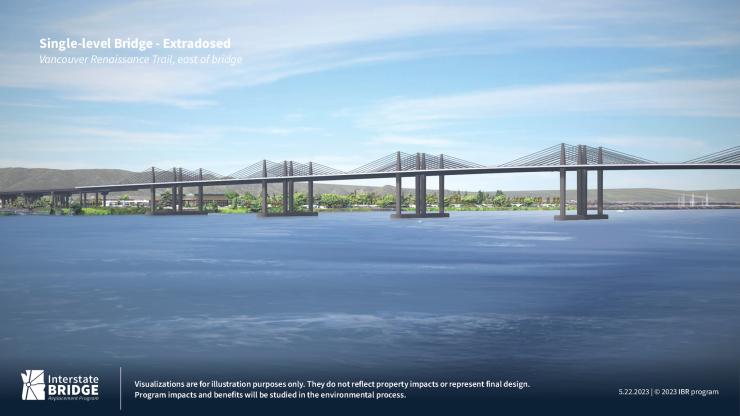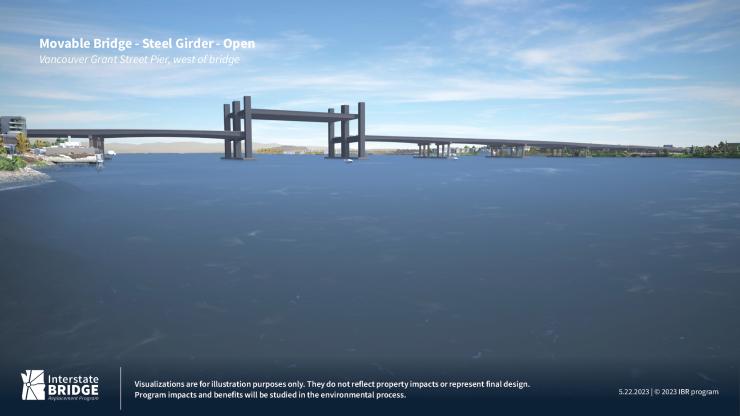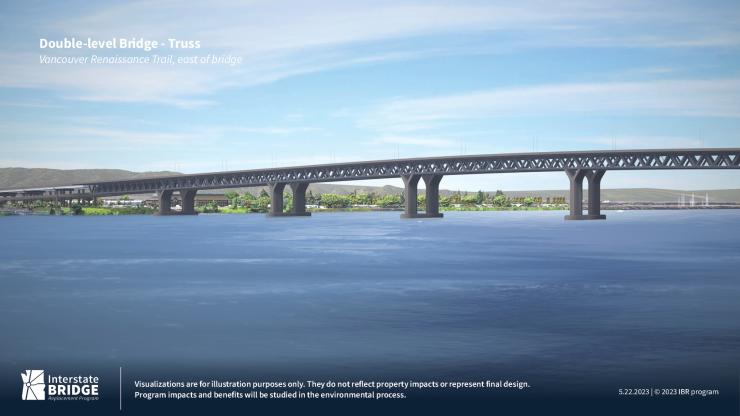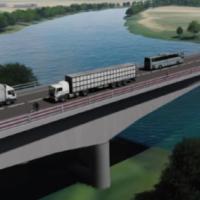The existing bridge carries the Interstate 5 highway across the Columbia River to link the two states as part of a regional, national and international trade route. Part of the crossing is now 105 years old and is at risk of collapse in the event of a major earthquake. Furthermore, it no longer satisfies the needs of commerce and travel.
The five different bridge types are based upon the three configurations currently being analysed. They include single-level, double-level and movable bridge configurations. The Interstate Bridge Replacement Program team stressed that images are not meant for decision-making or narrowing of options at this stage and that the concepts do not represent final design.
The bridge types (pictured below) are described as single-level bridge (extradosed); single-level bridge (finback), single-level bridge (concrete), single-level bridge (steel girder), movable bridge (steel girder) and double-level bridge (truss).

Above: Single-level bridge (extradosed)

Above: Single-level bridge (finback)

Above: Single-level bridge (concrete)

Above: Single-level bridge (steel girder)

Above: Movable bridge (steel girder)

Above: Double-level bridge (truss).
The project team said that it would have a better understanding later this year of the trade-offs between the three bridge configurations. A decision regarding bridge configuration will be made in 2024 before the start of the environmental analysis process. Considerations to determine bridge type will take place once a decision on the bridge configuration is made.



